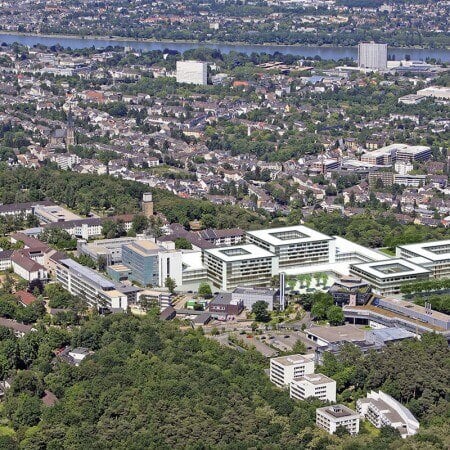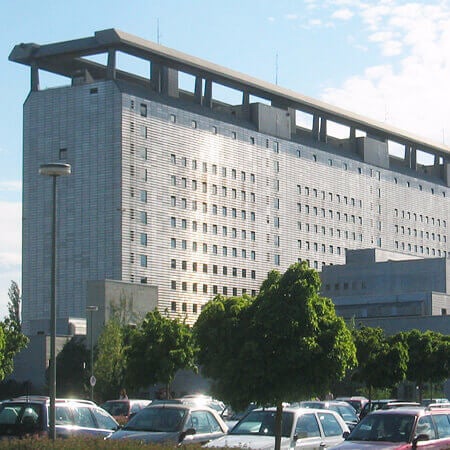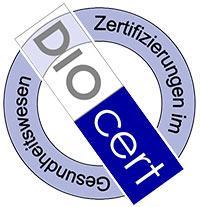The anterior cruciate ligament (ACL) stabilizes the knee and reduces stress on the cartilage. The knee remains functional when it is torn, but arthrosis progresses rapidly. Cartilage and menisci gradually wear out, and the joint capsule becomes damaged and inflamed. These changes become noticeable as early as 6 months after the injury. Therefore, it is worth treating the disease as early as possible, before the degenerative changes develop. Otherwise, the progression of arthrosis will cause that the knee will have to be replaced with an artificial endoprosthesis.
You can undergo treatment for ACL injuries of the knee abroad. Developed countries use modern surgical interventions types, which provide a reconstruction that is as close to anatomical as possible. The restored knee ligament will be as strong as it used to be before the injury. Already 6 weeks after the surgery, you will not feel any restrictions in your daily life, and after 6 months, maximum sports loads on the knee joint become possible.
Content
- Types of knee surgery
- Evolution of surgical treatment methods
- Arthrotomy and arthroscopy
- Materials for reconstruction
- Treatment of cruciate ligament injury abroad
Types of knee surgery
There are three types of surgery for ACL injuries:
- ACL suturing;
- ACL reconstruction (in fact, the creation of a new ligament instead of the torn one);
- hybrid interventions: a combination of suturing and reconstruction.
ACL suturing is rarely used. Direct fusion is prevented by diastasis (divergence) of the ends of the ligament. There is no blood clot between them, as happens with a tear of the lateral ligament located near the knee capsule. Therefore, unlike this ligament, the ACL does not heal normally. The blood clot in the knee is quickly washed out by the synovial fluid, which leads to the disappearance of the material substrate required for restoration. Sometimes the ends can be fully sutured, and these types of injuries are rare.
ACL reconstruction is the most common surgery for the anterior cruciate ligament injury of the knee. Doctors create a bone tunnel in which a new ligament is fixed. It is created from the patient's tissues, preserved donor tendons, or synthetic materials. Autografting is considered the gold standard: for ACL reconstruction; doctors take the patient's tendons and ligaments from other parts of the lower extremity. In this case, the highest strength of the reconstructed ACL is provided. The reconstruction can be a single-fascicle or double-fascicle. If in the 20th century it was preferred to reconstruct only the anterior and medial fascicles, then in the 21st century, preference is given to double-fascicle reconstructions. They require the creation of two bone tunnels but provide the best functional outcome.
Hybrid knee surgery is used primarily for partial tears. In this case, reconstruction involves the usage of both the fibers of the patient's anterior cruciate ligament and the graft. In this case, doctors achieve a reliable result with relatively quick patient recovery. However, this treatment option is limited, because it can only be used for mild injuries in young patients with a short history of an ACL tear.
Today, more than 250 options for surgical treatment of ACL injuries of the knee have been developed. Most of them involve ligament reconstruction: single-fascicle and double-fascicle, with the patient's own, donor, or artificial tissues, with fixation of the reconstructed ligament with titanium screws, suspension fixators, bone nails, compression impaction, etc. Most of the techniques are only of historical significance, but doctors still use dozens of different types of knee surgery.
Evolution of surgical treatment methods
ACL injury surgery has been performed since 1885 when Mayo Robson first sutured the torn ligament together. Today, this method is used rarely. As a rule, the ends diverge, and the blood clot is washed out by the synovial fluid. The ligament does not grow together or has insufficient strength.
In 1903, reconstruction for the anterior cruciate ligament injury of the knee was performed for the first time. The semitendinosus tendon was used as an autograft.
Since 1935, doctors have been using the quadriceps femoris tendons and a fragment of the patient's patellar ligament. In 1939, successful reconstruction of the semitendinosus tendon was performed. Moreover, it was used to restore not only the anterior but also the posterior cruciate ligament of the knee. In the middle of the twentieth century, the gracilis muscle-tendon also began to be used.
In 1969, a fragment of the patellar ligament was transplanted along with a bone block for the first time. This made it possible to securely fix it by pressing in.
In the 1970s, orthopedists developed extra-articular surgery. It is performed outside the knee. MacIntosh first described anterolateral tenodesis using the fascia lata of the thigh. However, this group of surgical interventions was not developed, since it did not provide long-term restoration of knee stability. Over time, doctors completely switched to ligament reconstruction as the major treatment option for ACL injuries. Even if extra-articular surgery is used, they are only an addition to plastic surgery.
In 1982, two tendons were used at once for the first time: the semitendinosus and the gracilis muscles. However, only one point was used to fix them, but not two. Later, this surgery was modified, and it is still used today in its improved form.
Since the end of the 20th century, arthroscopy has been widely used for ACL injuries of the knee treatment. It began to be used back in the 70s, but decades passed before the technique was introduced around the world.
In 1999, doctors first performed double-fascicle ACL reconstruction through two bone tunnels, but not through one, as was done before. This surgery showed excellent results. Nonetheless, it is more complex, so surgeons need to study for a long time before making such a reconstruction. Therefore, double-fascicle reconstruction is not performed in every hospital. But in developed countries, there are enough experienced surgeons who have a perfect command of this technique. It provides results that are as close to anatomical as possible.
In the 21st century, orthopedists began to use the anteromedial (via an additional anteromedial portal) technique. It creates a channel in the femur to secure the new knee ligament. This technique creates the best conditions for visualizing the true site of the ACL attachment. Therefore, physicians can create the femoral canal more precisely, achieving a graft position that is as close to natural as possible.
Hybrid operations have become another achievement in medicine. They are used in young patients with fresh partial tears. Doctors use a graft to repair the ligament, but additionally, suture the patient's own torn ACL. The technique allows for preserving the vascular network at the level of the synovial membrane of the knee. It creates conditions for normal graft healing and preserving mechanoreceptors, providing good knee proprioceptive sensitivity. In recent years, hybrid surgeries have begun to be used even for complete tears, preserving as much of their tissues as possible. Nonetheless, the operation is technically complex. When removing the remnants of the torn ligament, the surgeon must avoid damaging healthy fibers. At the same time, it is necessary to remove pathological tissues not to provoke impingement (ligament compression) in the intercondylar notch.
Arthrotomy and arthroscopy
The doctor needs to perform the necessary manipulations inside the knee joint to recreate the ligament after the ACL injury. It can be accessed in two ways: arthrotomy or arthroscopy.
Arthrotomy is rarely used in developed countries. It is unsafe for health because traumatic intervention involves a large incision in the knee and a complete joint opening. The intervention damages the vessels, nerves, and capsules. Patients start rehabilitation late and, therefore, it lasts longer. The operation leaves unaesthetic scars on the skin in the incision area. In addition, during such surgeries, patients lose more blood, suffer more complications, and spend more time in the hospital.
Arthroscopy is the most common surgical technique for ACL injury in developed countries. The surgery is performed through several punctures in the joint area. The doctor inserts thin, long instruments and a mini video camera with lighting to control his actions visually. Such surgical procedures on the knee are more sparing and safe for health. They provide many benefits:
- the integrity of the membranes of the knee joint is preserved;
- minimal trauma;
- less blood loss;
- no large scars on the skin;
- blood supply and innervation of the knee joint do not worsen;
- patients start walking earlier, start rehabilitation earlier and recover faster;
- shorter hospital stays;
- lower risk of complications;
- better tolerability of the postoperative period.
Materials for reconstruction
The following materials can be used for the creation of a new ligament:
- autografts;
- allografts;
- synthetic materials.
Autografts are fragments of the patient's tissues obtained from other body parts. Currently, the use of autologous tissues for plastic repair is considered the gold standard for ACL injuries treatment. This treatment option provides the most reliable long-term outcomes. The reconstructed ligament is as strong as before the injury.
Here is what doctors can use:
- quadriceps femoris tendon;
- the patient's patellar ligament with a bone block;
- knee flexor tendons.
Each method has advantages and disadvantages. The process of obtaining the knee flexor tendon is minimally traumatic and safe for health. The quadriceps femoris tendon is strong, but its use increases the risk of arthrosis of the patellofemoral joint – the place where the patella meets the femur. The use of the patellar ligament also provides high strength, but the process of obtaining it is traumatic and increases the recovery time for patients. The best orthopedists in the world still have no consensus on which of the plastic repair options is better to use.
Alloplasty is a less traumatic treatment option. Doctors use preserved donor tendons because they are not rejected after transplantation. After a few years, all donor cells die and are replaced by the patient's own. Thus, the patient receives a genetically native tendon. However, the disadvantage of alloplasty is a higher rate of repeated ACL injury. Preservation makes it not so strong, and therefore the method is not widely used. It is not suitable for athletes with a high level of physical activity; namely, they are the main group of patients with ACL injuries. Alloplasty is usually used in people with low physical activity who do not have extreme sports activities. Such tendons successfully withstand walking and running "for health".
Synthetic materials are also used infrequently. Their advantage is that the doctor does not need to additionally injure the donor site to obtain a tendon or ligament fragment. But there are drawbacks: most materials are less durable than biological tissues, and some patients develop reactive synovitis due to a foreign body presence in the knee. In recent years, new materials have appeared: they are more durable and do not cause pathological reactions. These artificial ligaments are expensive, but they provide results comparable to autologous grafting.
Treatment of cruciate ligament injury abroad
You can undergo treatment with reliable results, without health risks, in one of the foreign orthopedic clinics. Here are a few reasons for you to go abroad:
- experienced surgeons with high reputability all over the world work in developed countries;
- the use of innovative techniques for performing surgical interventions;
- interventions are performed through a minimally invasive arthroscopic approach;
- the use of double-fascicle plastic repair, which provides the reconstruction as close as possible to the anatomical one;
- the usage of an anteromedial technique to more accurately form the femoral canal, providing better knee function after surgery;
- the use of plastic repair not only with the patient's tissues but also with synthetic ones: new types of artificial ligaments are highly durable and do not cause inflammatory reactions;
- surgery abroad is safe for your health and rarely causes complications;
- full rehabilitation and cell therapy will ensure a quick recovery of the function of the knee joint.
To undergo medical treatment in one of the foreign clinics, you can use the Booking Health service. On our website, you can get up-to-date and accurate information about the cost of treatment for knee injuries in different medical centers, compare prices, and book a medical care program at a favorable price. Medical treatment will be easier and faster for you, and the cost of treatment will be lower.
You are welcome to leave your request on the Booking Health website. Our employee will contact you, consult, and answer all questions. We will organize your trip abroad. We will provide the following benefits to you:
- We will select the best hospital whose doctors specialize in in sports knee injury treatment and achieve the best results.
- We will help overcome the language barrier and establish communication with the doctor at the hospital.
- Your waiting times for medical treatment will be reduced and you will receive medical care on the most suitable dates.
- We will reduce the price. The cost of treatment in a foreign hospital will be lower than usual due to the elimination of overpricing and coefficients for foreign patients.
- Our specialists will solve any organizational issues: paperwork, transfer from the airport to the hospital, and back, hotel booking, and interpreting services.
- We will prepare your documents and translate them into English or German. You do not have to repeat the previously performed diagnostic procedures.
- We will maintain contact with the hospital after medical treatment abroad.
- We will arrange additional diagnostics and therapy if required.
- We will buy medicines in another country and send them to your native country.
While the best specialists in the world are taking care of your health, the Booking Health staff will take care of all the travel arrangements.
Authors:
This article was edited by medical experts, board-certified doctors Dr. Nadezhda Ivanisova, and Dr. Bohdan Mykhalniuk. For the treatment of the conditions referred to in the article, you must consult a doctor; the information in the article is not intended for self-medication!
Our editorial policy, which details our commitment to accuracy and transparency, is available here. Click this link to review our policies.
Sources:
Articles for Orthopaedic Practice - Orthogate
Sience Direct



















